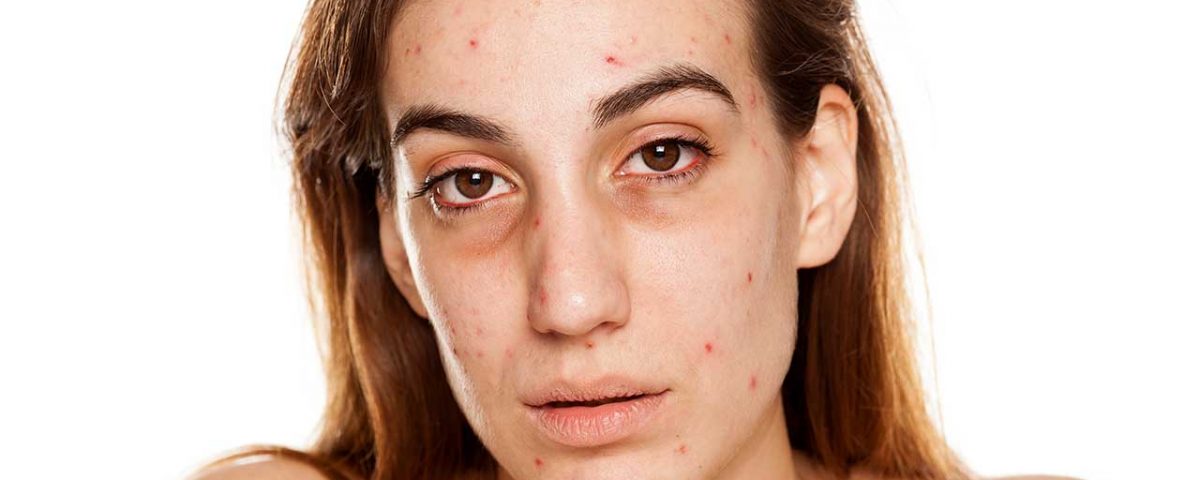Cocaine Skin Problems
Also called coke or crack, cocaine is a central nervous system stimulant that’s illegally manufactured, trafficked, and sold all around the world. It has a reputation for being one of the most addictive and dangerous drugs on the market. In addition to the various effects of excessive cocaine use – such as addiction and cardiovascular disease – skin disease has also been reported among users. Today, we’re sharing a list of common cocaine skin problems that may indicate a deeper problem.
Is Cocaine Bad for Your Skin?
Long-term cocaine abuse can wreak havoc on various areas of the body. Considering that your skin is the largest organ you have, it’s no surprise that cocaine is bad for your skin, too.
Although much of the damage caused by drug abuse begins to take effect on the inside, eventually, this inner damage will be reflected in your physical appearance. For instance, methamphetamine users are often identified by the impact of the drug on their skin, including scabs, scars, ulcers, and signs of premature aging.
Cocaine is no different. From inflammation to sores to redness to even rotting of the skin, this important organ that protects the inners of our bodies can be slowly deteriorated by cocaine over time.
Cocaine skin problems can be attributed to various factors, including the cutting agents used to create the drug, how it’s administered (intravenously versus snorting), and other unhealthy behaviors that may lead to skin problems like poor diet, lack of hygiene, and insufficient sleep.
Below are some common cocaine effects on the skin that can spiral out of control quickly and even indicate that someone is abusing cocaine.
What Does Cocaine Do to Your Skin?
Cocaine affects numerous bodily functions, from your heart rate to your blood pressure to how quickly you breathe. Its impact on the inner workings of the body can also contribute to skin problems, leading to damaged and even decayed skin.
Common cocaine effects on the skin include:
- Necrosis or death of skin cells
- Formation of fibrous tissue in the skin or excessive scarring of the skin
- Blackening of the palms (“crack hands”)
- Pustulosis, skin condition resulting in large pus-filled blister-like areas on the skin, also known as pustules
- Henoch-Schönlein Purpura, a skin disorder caused by inflammation and bleeding in small blood vessels (can lead to reddish-purple spots in the lower extremities)
- Buerger’s disease (thromboangiitis obliterans) is a skin disease in which blood vessels swell, preventing blood flow and causing blood clotting, which leads to pain, tissue damage, and gangrene (death or decay of the body tissues)
- Bullous erythema multiforme is a hypersensitivity reaction in the skin usually caused by infections that causes skin eruptions or lesions
- Infiltration, hematoma, air embolism, and phlebitis (most common among intravenous cocaine users)
Like methamphetamine, cocaine can also cause psychosis, during which users experience hallucinations and sensations of bugs crawling in their skin. This causes them to pick and scratch at themselves, which can contribute to scratches, skin infections, and other skin diseases.
In addition to psychosis-related behavior, the long-term effects of cocaine use on the skin are also the result of one of its most common ingredients: levamisole. Also known by its brand name Ergamisol, levamisole is a medication used to treat parasitic worm infections.
Before it was banned from being used on humans, levamisole was prescribed to treat conditions like rheumatoid arthritis and leukemia in the past. However, it was discontinued in 2000 due to adverse side effects like neutropenia (abnormally low white blood cell count), agranulocytosis, vasculitis (inflammation of the blood vessels), and of course, skin necrosis (death of skin cells).
However, despite being banned for use in people, levamisole is a common ingredient in cocaine, a disturbing fact first discovered by the U.S. Drug Enforcement Agency (DEA) in 2003. In 2009, 70% of cocaine seized by authorities contained levamisole.1
Furthermore, like other illicit stimulants, cocaine is also known to produce vasoconstriction or constricting of the blood vessels. This is a significant reason why long-term cocaine use can attack the skin. Vasoconstriction restricts blood flow to certain areas of the body, including the skin.
When the skin doesn’t receive enough blood and oxygen, it can’t heal itself as quickly or efficiently. In the end, not only is the skin placed in a position where it’s more vulnerable to disease, but healing is also greatly inhibited.
Are You Addicted to Cocaine?
If you or someone you know is addicted to cocaine, its effects on the skin won’t be your only worry. The long list of crack effects on the skin is just a few of the many ways this drug can impair your health and your quality of life.
Long-term cocaine abuse is also linked to cardiovascular disease, mental illness, psychosis, breathing problems, lung disease, increased risk of HIV and AIDS, and even nose problems. Addiction is the most common side effect of chronic coke use.
Due to its impact on dopamine in the brain, cocaine leads to a euphoric high that attracts users and a chemical imbalance that creates a physical dependence. With continued use, most users find themselves unable to quit cocaine without professional help.
That’s where our drug rehab in Texas comes in. If you or a loved one has become addicted to cocaine, our medically monitored detox and treatment program can help. In addition to withdrawal treatment, our cocaine rehab program also utilizes therapy and counseling to help patients understand the causes of their conditions, develop relapse prevention skills, and learn how to transition to a sober lifestyle after rehab.
For more information about our drug addiction treatment in Texas, call Banyan Treatment Centers today at 888-280-4763.
Related Reading:
8 Ball Cocaine: What You Should Know
Does Cocaine Affect Your Menstrual Cycle?
Source:









